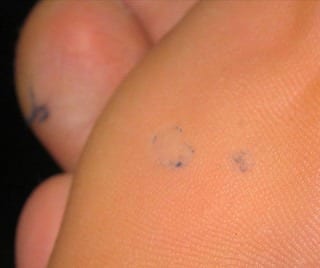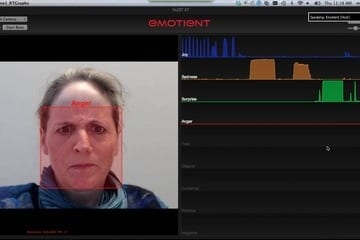
Over a billion people are affected by fungal infections every year, ranging in severity from topical skin conditions like athlete’s foot to life-threatening fungal blood infections.
The infection is more likely to occur when the body’s immune system is compromised due to an illness like HIV/AIDS, cancer or when receiving antibiotic treatment. There is a pressing need to develop efficient and disease-specific antifungal agents to mitigate this growing drug resistance problem. Traditional antifungal therapeutics need to get inside the cell to attack the infection but have trouble targeting and penetrating the fungi membrane wall. Also, since fungi are metabolically similar to mammalian cells, existing drugs can have trouble differentiating between healthy and infected cells. Recognizing this, IBM scientists applied an organic catalytic process to facilitate the transformation of PET (waste), into entirely new molecules that can be transformed into antifungal agents.
Researchers at Singapore’s Institute of Bioengineering and Nanotechnology (IBN) and California’s IBM Research -Almaden (IBM) have unveiled a nanomedicine breakthrough in common plastics like polyethylene terephthalate (PET) that can be converted into non-toxic and biocompatible materials designed to specifically target and attack fungal infections. This is significant as plastic bottles are typically recycled by mechanical grounding and can mostly be reused only in secondary products like clothes, carpeting or playground equipment.
These new antifungal agents self-assemble through a hydrogen-bonding process, sticking to each other like molecular Velcro in a polymer-like fashion to form nanofibers. This is important because these antifungal agents are only active as a therapeutic in the fiber or polymer-like form. This novel nanofiber carries a positive charge and can selectively target and attach to only the negatively-charged fungal membranes based on electrostatic interaction. It then breaks through and destroys the fungal cell membrane walls, preventing it from developing resistance.
According to Dr Yi Yan Yang, Group Leader, IBN, “The ability of these molecules to self-assemble into nanofibers is important because unlike discrete molecules, fibers increase the local concentration of cationic charges and compound mass. This facilitates the targeting of the fungal membrane and its subsequent lysis, enabling the fungi to be destroyed at low concentrations.” Leveraging IBM Research’s computational capabilities, the researchers simulated the antifungal assemblies, predicting which structural modifications would create the desired therapeutic efficacy. “As computational predictive methodologies continue to advance, we can begin to establish ground rules for self assembly to design complex therapeutics to fight infections as well as the effective encapsulation, transport and delivery of a wide variety of cargos to their targeted diseased sites,” said Dr. James Hedrick, Advanced Organic Materials Scientist, IBM Research. The minimum inhibitory concentration (MIC) of the nanofibers, which is the lowest concentration that inhibits the visible growth of fungi, demonstrated strong antifungal activity against multiple types of fungal infections. In further studies conducted by Singapore’s IBN, testing showed the nanofibers eradicated more than 99.9% of C. albicans, a fungal infection causing the third most common blood stream infection in the United States, after a single hour of incubation and indicated no resistance after 11 treatments. Conventional antifungal drugs were only able to suppress additional fungal growth while the infection exhibited drug resistance after six treatments.
Additional findings of this research indicated the nanofibers effectively dispersed fungal biofilms after one-time treatment while conventional antifungal drugs were not effective against biofilms. The in vivo antifungal activity of the nanofibers was also evaluated in a mouse model using a contact lens-associated C. albicans biofilm infection. The nanofibers significantly decreased the number of fungi, hindered new fungal structure growth in the cornea and reduced the severity of existing eye inflammation. These experiments also showed mammalian cells survived long after incubation with the nanofibers, indicating excellent in vitro biocompatibility. In addition, no significant tissue erosion is observed in the mouse cornea after topical application of the nanofibers.
In recent years, the number of opportunistic fungal infections has increased due to growing populations of patients with weakened immune systems, for example due to cancer, organ transplant or HIV/AIDS.
The Latest on: Antifungal agents
[google_news title=”” keyword=”Antifungal agents” num_posts=”10″ blurb_length=”0″ show_thumb=”left”]
via Google News
The Latest on: Antifungal agents
- Valley Fever, Now Endemic to Southwest, Disproportionately Affects Minority Groupson April 28, 2024 at 11:25 pm
The fungus is now found throughout the Southwest, including California, though Arizona accounts for nearly two-thirds of all Valley fever cases in the U.S.
- Pharmacies raided for selling overpriced medson April 23, 2024 at 3:39 pm
Hyderabad: Some medical shops were found to be selling certain anti-fungal medicines at almost double the actual cost, the Drugs Control Administratio.
- Global Tinea Pedis Treatment Market Set to Skyrocket, Reaching US$ 2.24 Billion by 2032on April 22, 2024 at 8:01 pm
Tinea Pedis Treatment Market is projected to an impressive US$ 2.24 billion by the end of 2032, reflecting a remarkable CAGR of 5.2%.
- Unruly Gut Fungi Can Make Your Covid Worseon April 19, 2024 at 4:01 am
An infection can upset your microbiome, and if certain gut fungi run riot, this can kick the immune system into overdrive.
- Pulmocide’s inhaled antifungal shows promise in lung transplant patientson April 16, 2024 at 6:09 am
Pulmocide has said that opelconazole was also well tolerated with just two discontinuations in the Phase II trial.
- Pulmocide Announces Successful Results from the OPERA-S Study: a Phase 2 Safety Study with Inhaled Opelconazoleon April 15, 2024 at 5:33 am
Inhaled opelconazole observed to be generally well tolerated in this study as prophylaxis against pulmonary aspergillosis in lung transplant ...
- Top 8 Best Antifungal Supplements in 2024on March 30, 2024 at 5:01 pm
Look for supplements that contain natural antifungal agents such as caprylic acid, oregano oil, and garlic extract. These ingredients have been shown to be effective in fighting fungal infections.
- Antifungal tolerance in Candida auris contributes to treatment failureon March 22, 2023 at 5:00 pm
auris) to all three classes of antifungal drugs commonly used to treat invasive candidiasis. Microbial infections are caused by harmful bacteria, fungi, or viruses and affect millions worldwide.
- Antibacterial and antifungal drug discoveryon February 1, 2022 at 4:33 pm
It is widely accepted that the increased availability and use of antibacterial and antifungal agents in recent years has resulted in the control and even eradication of diseases, but that it has ...
- Combination Antifungal Therapy for Invasive Fungal Infections in Children and Adultson June 18, 2013 at 3:12 am
Although therapeutic first-line approaches have been established in severely immunosuppressed patients with a high risk of invasive fungal infections, treatment modalities for cases with ...
via Bing News










